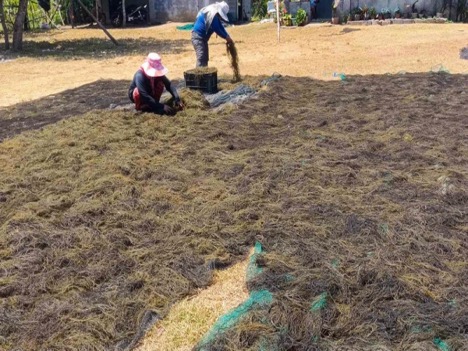
BUGUEY, Cagayan (May 6, 2024)—The Bureau of Fisheries and Aquatic Resources (BFAR) in Region 2 has collaborated with the local government unit (LGU) to boost the production of seaweeds (Gracilaria), also locally known as “guraman.”
Mayor Licerio Antiporda III said their fishing community during the second Buguey Agri-Fiesta conducted in April harvested around 100 metric tons or an equivalent of 14 MT of dried guraman.
Antiporda noted that their bountiful harvest showcased the commercial production of guraman in the Buguey Lagoon where farming technology was enhanced.
He said seaweed farming remains one of the major sources of income in the municipality as its cultivation is year-round.
The BFAR explained that seaweed is a raw material for gulaman bar production, wherein agar is used as an emulsifier for commercial products, or processed as chips, noodles or pickles.
It said this is also locally consumed in fresh form and is used as supplemental feeds for siganids culture.
“Due to the promising economic returns from seaweed farming in the municipality, more farmers are encouraged to engage in such livelihood,” Antiporda said.
Thus, the need for interventions on culture and post-harvest management to sustain the industry in the municipality, he added.
Meanwhile, BFAR Region 2 director Angel Encarnacion said the bureau has been supporting the LGU in its efforts to develop and manage its various aquatic resources uniquely found in the municipality such as gracilaria, siganids, mud crabs and oysters, among others. LEANDER C. DOMINGO
